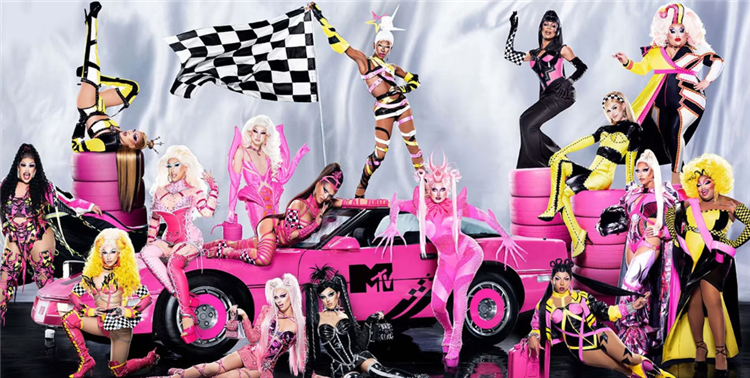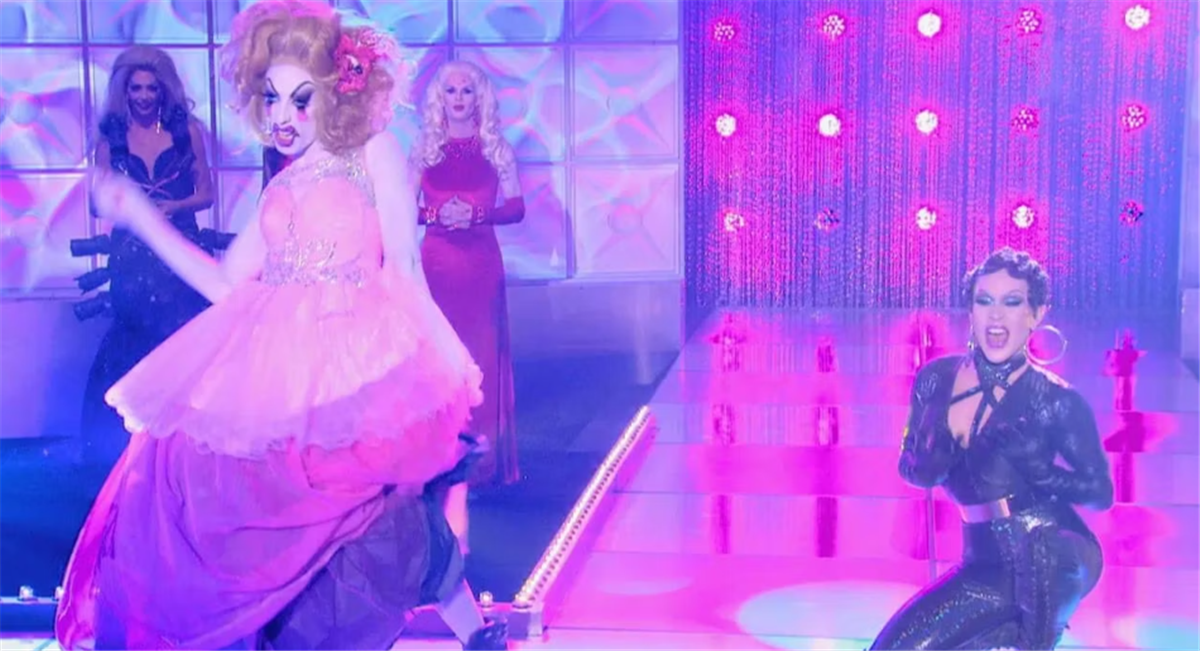Reality TV is filled with villains, individuals who spice up their shows and whose dastardly antics audiences love to hate. Rarely has a series created as many iconic villains as RuPaul’s Drag Race. Created by RuPaul Charles on MTV, the groundbreaking drag reality competition has offered astounding examples of LGBTQ+ art for more than a decade — as well as numerous Queens who have thrived as their season’s invigorating source of tension. Yet what makes a truly good Drag Race villain?
With Season 16 currently airing and fans debating whether one of the queens in this installment is truly a villain or just a “wannabee,” a conversation has begun online about what truly makes a good antagonist. Well, reviewing the people this show has painted as its villains reveals that there are in fact standards separating Queens who can master their villainy from Queens who spout off an occasional rude comment to secure themselves more airtime. Not only do the truly great villains have to have impeccable drag skills to back it up, but there is one trait that they all share: conviction. The ability to inventively critique the surrounding girls, stand firmly in their opinions, and look absolutely fabulous as they make their way through the competition leaving nothing but hurt feelings and eliminated contestants in their wake.
Reading Is Fundamental on ‘RuPaul’s Drag Race’
Now, while the Queens competing usually don’t spend their time prepping for challenges openly judging each other, RuPaul’s Drag Race is filled with contestants who believe they have the authority to speak on how impressive or disappointing another Queen’s drag is. One of this season’s main sources of drama has been the contestant Plane Jane, a character who has impressively won a challenge already but has earned the ire of the entire cast for her tendency to needlessly critique those around her. While many of the girls meet her unwanted criticisms with their own unapologetic judgment, her words lack a level of tact that makes them appear much more offensive than the playful “reads” of her fellow cast.
She isn’t the first Queen to suffer from a lack of finesse when trying to playfully criticize others; the most famous case of this issue is Season 5’s Serena Cha Cha, a Queen who quickly made enemies of the entire cast for her tendency to randomly offend everyone around her. These Queens and the others who’ve suffered from this issue are very different, but there is one flaw that unites them all — they appear inauthentic, and if there’s one thing you should never be on RuPaul’s Drag Race, it’s fake.
“Reading” is an LGBTQ+ tradition that involves critiquing those around you in an inventive way, usually utilizing wordplay, backhanded compliments, or even just a mischievous tone to throw barbs at someone you would often consider a friend. Reading is extremely common on Drag Race — there’s a whole mini-challenge based around it — as many of the queens feel comfortable enough to make slight jokes at each other’s expense. And while sometimes the reads hit a little too close to home (exemplified in the groundbreaking Coco Montrese and Alyssa Edwards fight from Season 5), it’s usually very clear when a Queen is attempting to read versus when she’s legitimately mocking someone.
Where too many Queens mishandle their attempts at appearing villainous is in trying to read others but doing it in ways that are either not funny to anybody else or reek heavily of someone trying to grab the cameraman’s attention. While she’s offered her thoughts on many of the others, Plane Jane has been mainly targeting Amanda Tori Meating this season. She’s not necessarily alone, as many others have ribbed the woman for her messy makeup, but her lack of a genuine relationship with Amanda (and the small smirk she has every time she says something rude) reveals that there is no mirth in her comments. These consistent comments have made them all question just how genuine she’s being in this competition, speaking to the inauthenticity displayed by Plane and the many others who’ve attempted to be villains during their tenure on the program.
A Villain Has To Have the Skills To Back Their Trash Talk

It’s difficult to articulate just what makes an unforgettable RuPaul’s Drag Race villain. Of course, there are Queens each season who may be a little shady, but a competitor who perfectly embodies villainy is hard to come by. Whether it be Season 6’s Gia Gunn or the Heathers clique of Season 3, these are Queens who act as a blueprint for a type of delightful fiendishness that later competitors can only hope to emulate. Even among these legendary ranks, there are ones who rise above the others, but a unifying factor of all the best antagonists is their conviction. These Queens may say truly hurtful things but always provide the receipts to back up their claims. They possess an innate confidence that grants them the influence (self-appointed, but still) to flaunt their opinions, ready for whatever repercussions their statements may bring. That confidence is key to a great villain persona, which usually means the Queens have to have the talent to back their words up.
A perfect example of deliciously villainous behavior comes from season 15’s Luxx Noir London. A fashionista who made waves her entire showing for her astounding runway package and casual self-confidence, she was a personality who awed the audience and loomed large in the Werk Room. In a truly painful scene, she academically broke down why fellow competitor Loosey LaDuca did not deserve to compete, citing her reasons for why she should be sent home — a very rude thing to say, yes, but also a perfect example of the best kind of villain. Luxx’s words were filled with complete conviction and, though she did apologize later for causing Loosey pain, always stood by what she said. She delivered her reads eloquently and held the expansive expertise to back them up, acting as a true exemplar of the skills a great villain needs. And no matter how hard other Queens may try to be the villains of their season, they too often fail to grasp the truth — you don’t try to be the villain, you just are.
Being a Villain on ‘RuPaul’s Drag Race’ Is a Label That Isn’t Fit for Everyone
It’s hard to enter a reality TV competition intending to be the villain because that desire is usually visible to everyone watching through the screen, as many fans of RuPaul’s Drag Race can surely tell you. Of course, it’s not hard for one person to be rude to another, but to truly embody a villainous archetype means to carry with you an effortless confidence that dares others to challenge you. It means that your critiques of others are as succinct as they are scathing and that your words come from your genuine thoughts (and not from your efforts to get more screen time). This series is filled with numerous amazing Queens who have antagonistic traits, but it takes only a basic review of their ranks to see who the true villains are. It’s the ones with the constitution to stand by what they say, who perfectly portray their overconfidence, and who have the actual talent to reinforce that they know what they’re talking about.
Is there such a thing as the “perfect villain” when so much of reality TV has been polluted by people’s ideas of how they want to be perceived? RuPaul’s Drag Race has seen a decrease in genuinely negative thoughts in recent years, due in large part to an often toxic fandom who feel the need to harass Queens online for their words on the show. Yet even with this constant pressure from the fans and the judges alike, there are those performers whose superiority conveys itself in the most tantalizing ways. Who does not need to try to be anything other than who they are and let their immense talent justify the words they have for others? These Queens are few and far between, but their presence is a gift to the show as a whole — and is also an illustrious title that many current Queens fail to reach.
RuPaul’s Drag Race is available to stream on MTV in the U.S.
